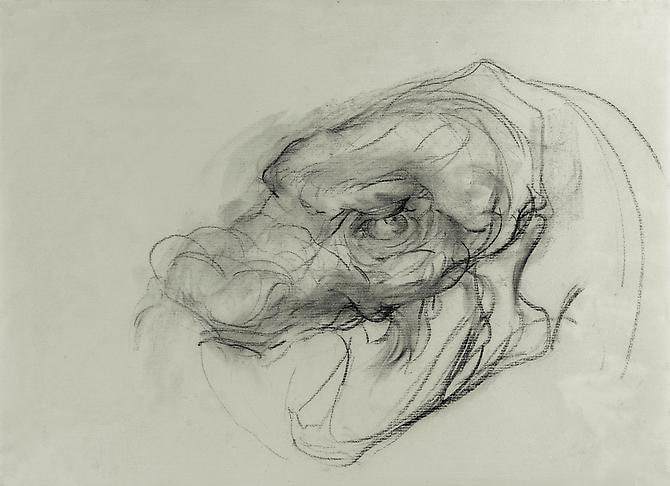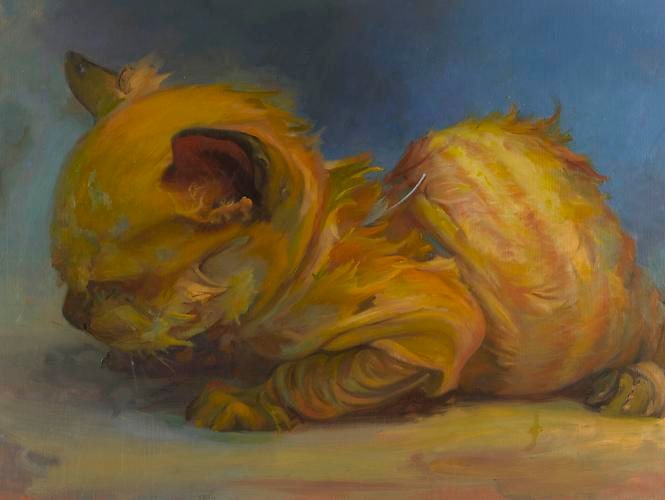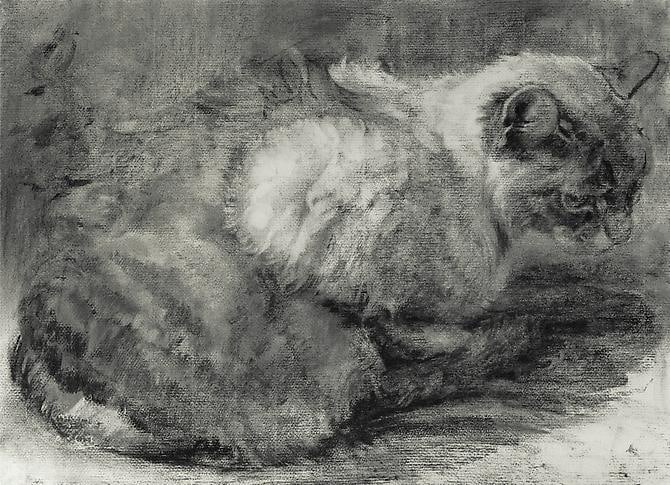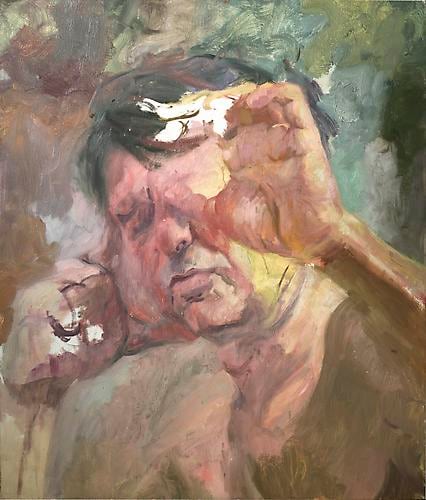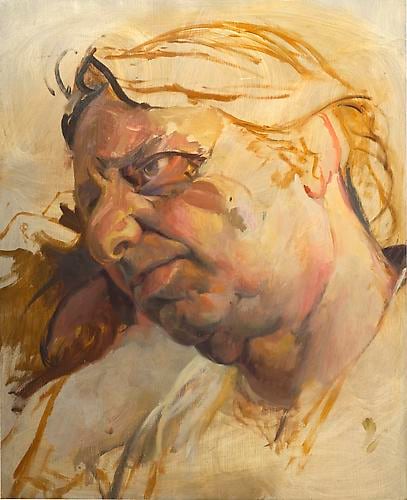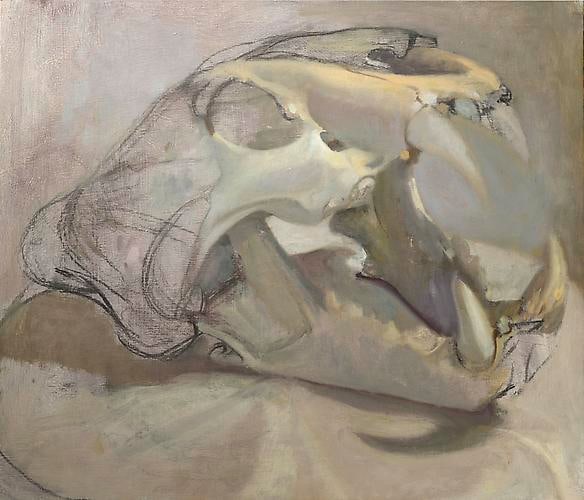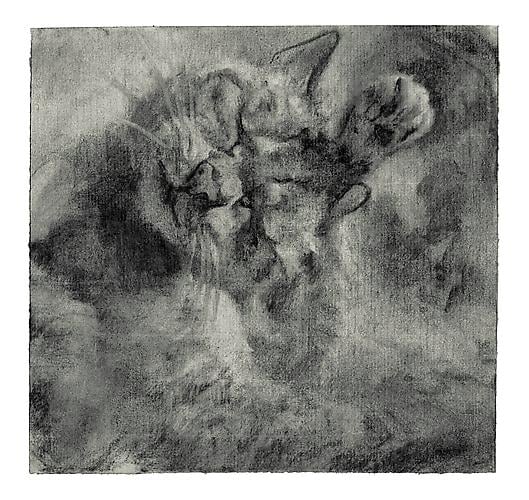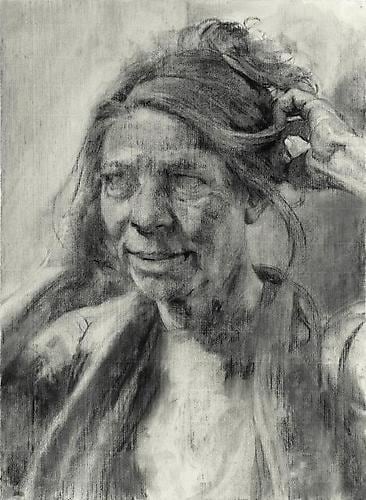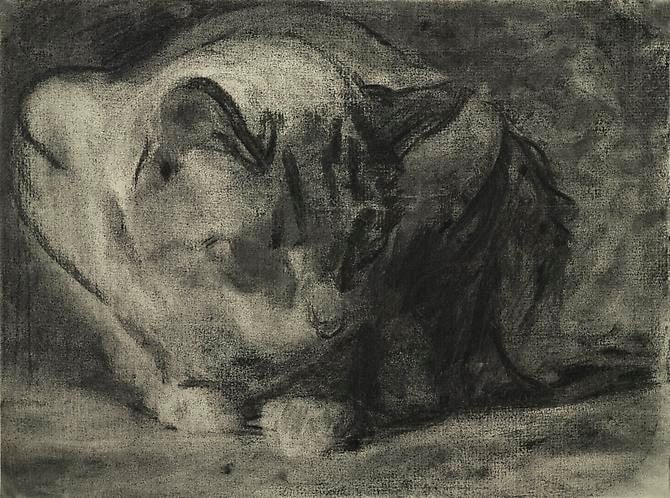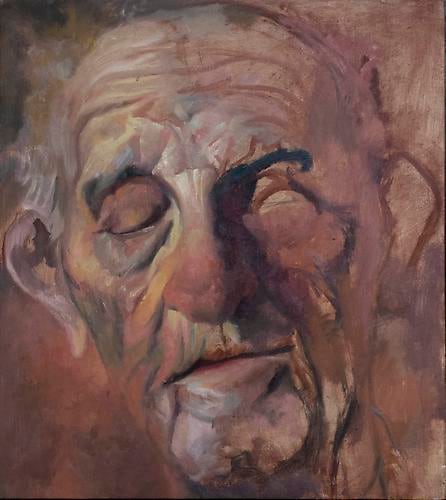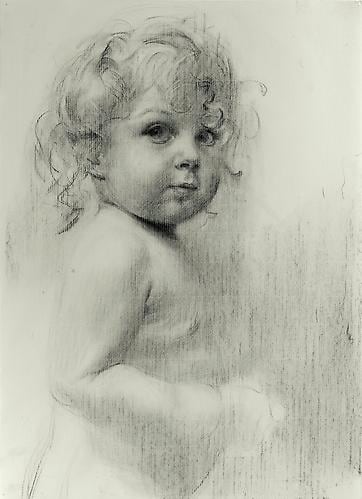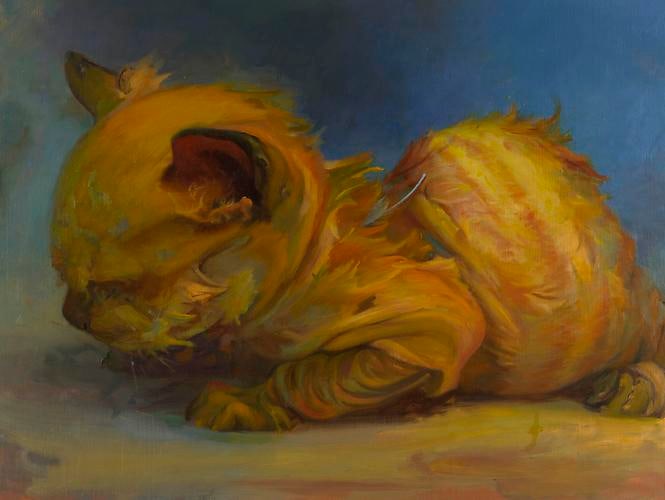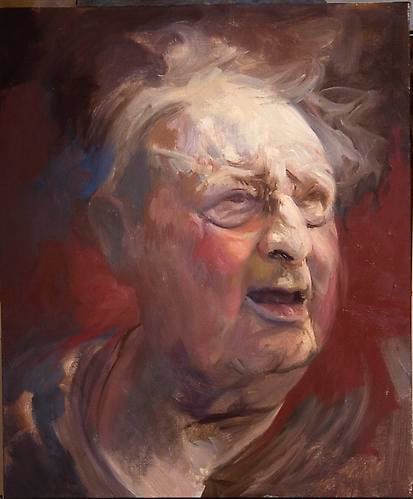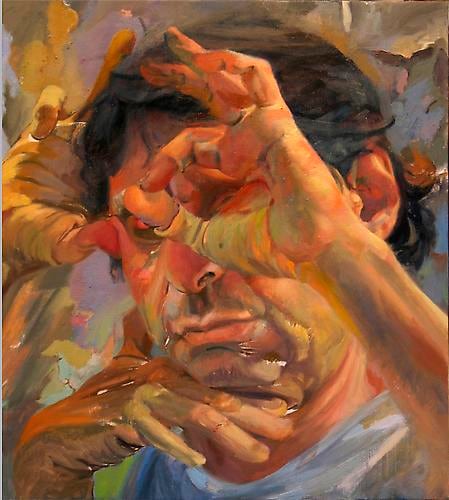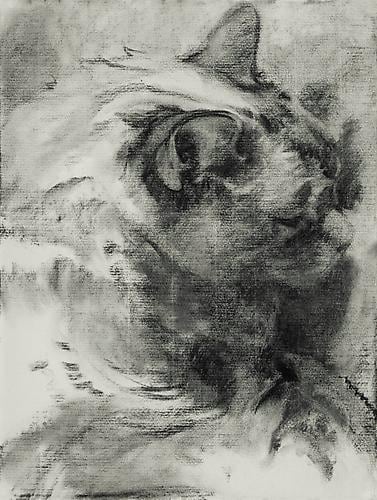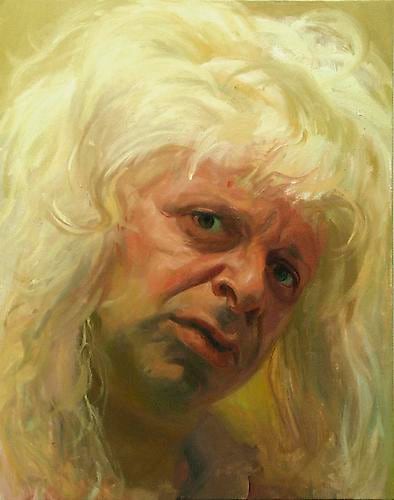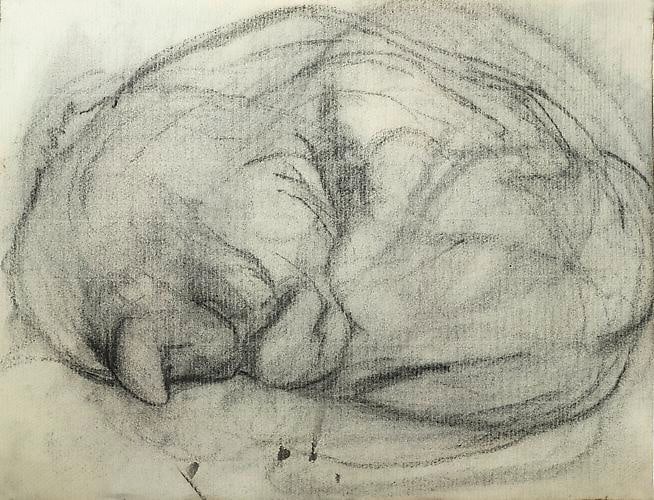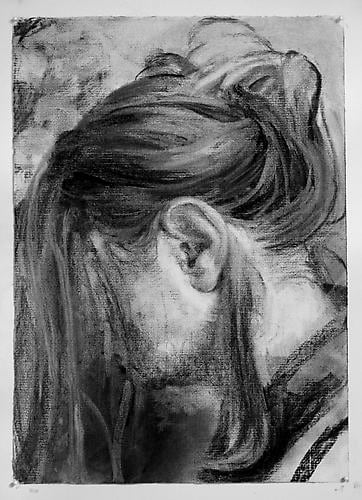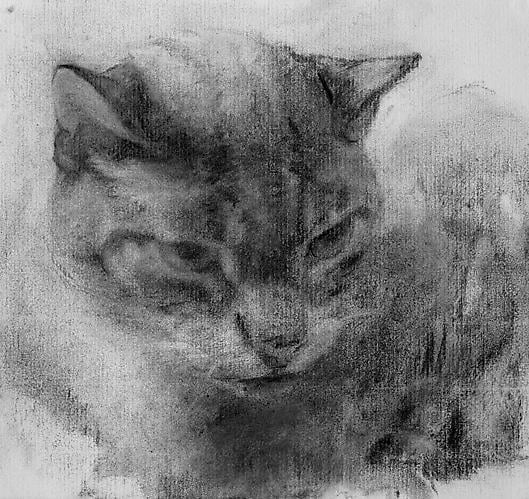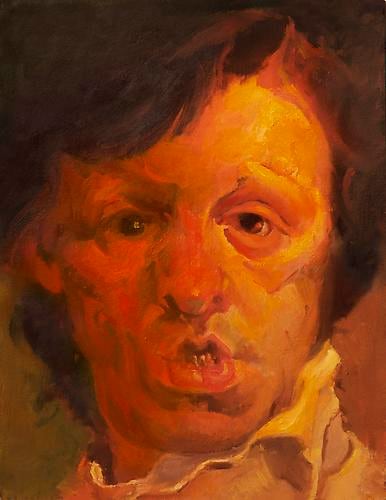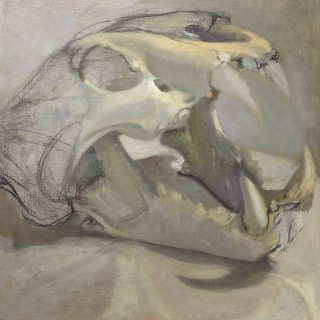
Sticky Subjects: Michael Davis’s Post-Abstract Abstraction
On first glance, Michael Davis’s media, methods and subject matter may seem firmly anachronistic, but the longer one looks, the more unstable the images appear. His drawings and paintings are sites of persistent struggle between three-dimensional subjects and two-dimensional space. The result is a kind of post-abstract abstraction, where depth and flatness, intense emotion and the purest formalism, attain to a kind of inconsistent consistency. Here are some thoughts about how this works in practice:
Soft medium
Davis’s media of choice are oil and charcoal—soft media, malleable, carrying the implication that the image might go on changing, remain forever unfinished, or at least retain, as Davis says, “the loose boundaries of a study.” Hence, perhaps, his recent preference for drawing over painting. And yet, there is nothing sketchy about the drawings; like the paintings, they have a high, almost excruciatingly high, degree of finish. The skin-rough surface of canvas or paper is touched, and touched, and touched again, with a hand that is no less nervous for being exceptionally expert. A hand—but whose hand?
Sticky subject
Is it the artist’s hand one sees at work here? Strange question, but, still, one has to ask, since in many of the self-portraits that make up a significant portion of Davis’s oeuvre, hands frame the face, yet it is not clear whether the hands and face belong to the same body; and in certain of these pictures, a third, impossible hand thrusts in to press the question. The title of one of the drawings of the cats who are also among Davis’s favorite subjects, “Cat and Paw,” makes the detachment explicit, while the title of another, “Whole Cat,” offers the exception that proves the rule. The majority of Davis’s depictions, then, are drawn “from life,” but the “from” is as meaningful as the “life.”
So, the subjects of these pictures are detached, abstracted from life. Which is not to say that they are dead, although these are death-haunted images. For Davis, the work of art is a work of mourning—or insofar as the work is unfinishable, of melancholia. In the art of the 1960s, subject matter, once banished, now chastened, made its return to the picture plane by passing through the filter of the cool media. Davis has labored to construct a private detour around this route, by which to smuggle in the uncool media and lost intimacies to which he remains stubbornly, melancholically attached.
The chief danger he runs on the way is falling into sentimentality. And, given that, what more dangerous model could he choose than the cat, always a sticky subject, and now the universal meme for the pornography of the emotions? The lol-cats, though, like all pornographic models, are pure projections: the emotions they conjure are the viewer’s alone. Davis’s cats, by contrast, possess subjectivity, but of a kind that must remain inaccessible to us. Rolling, grooming, or crouching with the same intense concentration that Davis brings to the touch and touch and touch of the crayon, they are absorptive figures, like Vermeer’s women, only more perfectly sealed-off.
Contested space
In Davis’s work as in Vermeer’s, the space of the picture as a whole is as obdurately inward as the figure within it. The inwardness suggests depth, but at the same time, like the peculiar detachment of the artist’s forming hand from his expressive face, it signals the disjunction of this space from ours. And being, unlike Vermeer, a late modern, Davis associates the break from the illusion of depth with painterly abstraction’s stress on the picture plane. “I search,” he says, "for a way to give my subjects a space that feels like I’ve liberated them from three-dimensional restraints and gained for them a freedom that can only exist in a two-dimensional world. Searching for a way to achieve this ambiguous place is a big part of my struggle to resolve a piece."
The electric fur of the cats, which radiates indefinitely into their surround, comes closest to resolving this tension between three-dimensional subjects and two-dimensional space, while the title of one self-portrait, “Head in Clouds,” bitterly mocks the whole enterprise. In fact, for Davis, the struggle to resolve the relation between space and subject, world and self, can never end; it can only be abandoned, in exhaustion and defeat, then taken up once more, in something like hope.
Ellen Levy
Pratt Institute
Ellen Levy is a Visiting Associate Professor at Pratt Institute and the author of Criminal Ingenuity: Moore, Cornell, Ashbery and the Struggle between the Arts (Oxford University Press, 2011). Her poems and essays have appeared in Dissent, Literary Imagination, Modernism/Modernity, The Nation, The New York Review of Books and Raritan; recent work includes an essay on art historian T. J. Clark for Genre and a catalog article on Ray Johnson for Richard Feigen gallery.

